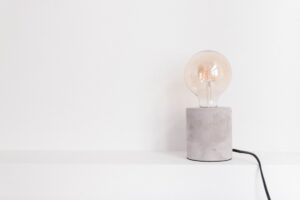Featured
Ensuring a good night’s sleep is crucial for our well-being and daily performance. However, individuals dealing with allergies often struggle to achieve quality sleep due to allergens in their bedroom surroundings. To enjoy a serene and allergen-free sleep, here are seven effective strategies to consider:
Ways to ensure you enjoy an allergen-free sleep

Opt for organic mattresses
Think about switching to organic mattresses. These mattresses are made from natural materials. They resist dust mites and mold growth due to their inherent properties, providing a healthier sleep environment. One item worth considering for its eco-friendly raw materials is organic latex mattresses | Essentia.
Hypoallergenic bedding
The choice of bedding materials can significantly influence sleep quality. Seek out hypoallergenic pillows, mattress covers, and duvet covers specially designed to repel allergens. Focus on items crafted from tightly woven fabrics that hinder allergen penetration. Your bed is where you spend a significant portion of your life, so it’s worth investing in high-quality bedding that provides comfort and protects you from allergens.
Embrace a clutter-free bedroom
A cluttered bedroom can accumulate dust, complicating the cleaning process. Minimize the number of items in your sleeping space to reduce the potential surfaces where allergens might settle. Choose furniture that is easy to dust, and steer clear of using heavy curtains, as these can become a magnet for dust.
Keeping your bedroom tidy makes it easier to clean and reduces the surfaces where dust and allergens can accumulate. Consider implementing a minimalist approach to bedroom decor, focusing on essential items and keeping decorations to a minimum.

Flooring matters
Flooring materials can harbor allergens, with carpets being especially problematic. Opt for hardwood or tile floors instead of wall-to-wall carpets. Hardwood and tile floors are easier to clean and less likely to trap allergens. If you prefer the warmth and comfort of carpet, choose low-pile carpets, which are less likely to harbor dust mites, and ensure the vacuum you use has a HEPA filter. In addition to that, you need to vacuum your carpets on a regular basis.
Manage humidity levels
Humid environments are breeding grounds for mold and dust mites. Employ a dehumidifier to maintain indoor humidity levels below 50%. Mold growth is inhibited, and dust mites are presented with conditions unfavorable to their continued existence in the environment.
Tackle pet allergens
If you share your living space with pets, their fur can be a prime source of allergens. Keeping pets out of your bedroom is a wise move. If feasible, designate specific areas as pet-free zones within your home. Regularly grooming and bathing your pets can also help reduce the amount of pet dander they produce. Those who have problems with allergic reactions will find this to be of particular significance.

Regular cleaning and dusting
Frequent cleaning and dusting are indispensable for a sleep environment free from allergens. Utilize a damp cloth when wiping surfaces, as dry dusting can send allergens airborne. Window ledges, ceiling fans, and light fixtures are examples of places you should pay attention to.
It is essential to keep your sleeping environment clean, not only for your comfort but also for your health. Washing your bedding in hot water (at least 130°F or 54°C) once a week can kill dust mites and remove allergens. Vacuuming your mattress and pillows every few months can help reduce allergen buildup.
Last words
Creating an environment conducive to allergen-free sleep enhances sleep quality and overall health. You can craft a bedroom that fosters peaceful and revitalizing sleep by investing in an organic mattress and hypoallergenic bedding, maintaining cleanliness, controlling humidity levels, and being attentive to potential allergen sources.






























